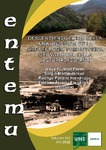Veinte años desde el descubrimiento del yacimiento paleolítico de la cueva Sopeña (Onís, Asturias, España)

Use this link to cite
http://hdl.handle.net/2183/38337
Except where otherwise noted, this item's license is described as Atribución-NoComercial-SinDerivadas 3.0 España
Collections
- Investigación (FCIE) [1260]
Metadata
Show full item recordTitle
Veinte años desde el descubrimiento del yacimiento paleolítico de la cueva Sopeña (Onís, Asturias, España)Date
2022Citation
Pinto Llona, A. C., Grandal-d’Anglade, A., & Uzquiano Ollero, P. (2022). Veinte años desde el descubrimiento del yacimiento paleolítico de la cueva Sopeña (Onís, Asturias, España). Entemu, 19 [Ejemplar dedicado a: Descendiendo el río Sella. Una (re)visión de la arqueología prehistórica del Valle del Sella (Asturias, España)], 59-99. https://www2.uned.es/ca-gijon/web/actividades/publica/entemu22/entemu_2022.pdf
Abstract
[Resumen] El yacimiento paleolítico de Sopeña fue descubierto en el año 2001. Desde entonces, un sondeo y varias campañas de excavación han revelado una secuencia de 17 niveles arqueológicos. Los seis inferiores (niveles XII a XVII), musterienses, obra de neandertales, como señala la presencia de herramientas típicas. Por encima de ellos hay cuatro niveles de Paleolítico Superior Inicial (niveles VIII a XI), donde dominan las hojas sobre las lascas característica; y por último, los siete niveles superiores de la cultura Gravetiense (niveles I a VII) definidas en base al hallazgo de varias puntas gravetienses. Dataciones realizadas por C14 y otros métodos confirman estas observaciones.
Este artículo resume lo que hasta hoy sabemos de este yacimiento, a partir del estudio de
materiales recuperados en un sondeo. [Abstract] The palaeolithic assemblage of Sopeña was discovered in 2001. Since the discovery, a test
excavation and several fieldwork seasons have revealed a sequence of 17 archaeological levels. The
lower six (levels 12 to 17) are Mousterian, the work of Neanderthals, as revealed by the presence
of typical tools. Over these there are four Early Upper Palaeolithic levels (levels 8 to 11), where
blades dominate over flakes, as is characteristic of that time. Finally, the seven upper levels are
Gravettian (levels 1 to 7) as defined by the finding of several typical points. Dates by C14 and other
methods confirm these observations. Here we summarize what we know about this site up to now,
mainly from the study of the materials recovered in the test excavation.
Keywords
Musteriense
Paleolítico Superior Inicial
Gravetiense
Arqueomagnetismo
Antracología
Mousterian
Early Upper Palaeolithic
Gravettian
Archaeo-magnetism
Anthracology
Paleolítico Superior Inicial
Gravetiense
Arqueomagnetismo
Antracología
Mousterian
Early Upper Palaeolithic
Gravettian
Archaeo-magnetism
Anthracology
Rights
Atribución-NoComercial-SinDerivadas 3.0 España
ISBN
978-84-88642-03-5






